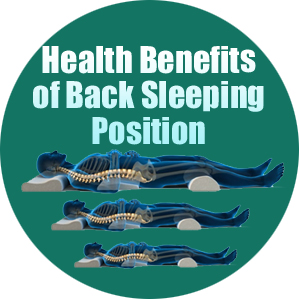

Whether you’re dealing with strained muscles, herniated discs, or nerve compression, our team is skilled at diagnosing and treating neck pain.

That being said, even if you sleep in a neck-friendly position, neck pain can still pop up now and then. Neck conditions, such as osteoarthritis or herniated disks, can be exacerbated by sleeping on your stomach or using the wrong pillows.
#Should i sleep on my back tv#
Many people fall asleep on the couch or in a recliner watching TV at night, but this can hurt your neck. Not only does stomach sleeping affect your neck, but it isn’t ideal for lower back pain either. When you wake up, the muscles in your neck and shoulders may feel tight or sore. This means that your neck is out of alignment while you sleep and, unfortunately, this puts a lot of stress on your neck and shoulder muscles. Sleeping on your stomach requires you to keep your head turned all night long for you to breathe properly. Sleeping on your stomach, regardless of what pillows you use, is the worst position for your neck. The added pillow under your knees can help relax all of the muscles along your spine from your lower back up to your neck.Īvoid sleeping on too many thick pillows as that can increase the angle of your neck and cause neck pain. Not only is this good for your neck, but it also helps alleviate knee and hip pain.įor ultimate spine alignment, use a pillow under your neck designed for back sleepers and tuck an additional pillow behind your knees to support the natural curve of the back. Sleeping flat on your back takes advantage of gravity to keep your body in a neutral alignment over your spine. You may also find that placing a second pillow between your legs further promotes a neutral spine. To ensure your spine is aligned, use a pillow that is specifically designed for side sleepers.

Side sleeping can help keep your neck in the proper spinal alignment as long as you don’t use pillows that are too thick. Whether you sleep with your legs stretched out or curled up in a fetal position, this position is ideal for reducing lower back pain and reducing snoring, and, if using the correct pillows, can be good for your neck as well. The most common sleeping position is the fetal position, a type of side sleeping in which your legs are curled up toward your chest. Let’s take a look at some of the most common sleeping positions: Side sleeping However, if sleeping positions are causing your pain, it’s relatively easy to remedy the problem. Of course, that leaves 95% of non-sleep-related causes of neck pain. Researchers found that sleeping positions are responsible for about 5% of chronic neck pain. How your sleep positions affect your neckĭo you always wake up feeling refreshed? Or do you sometimes wake up with a kink in your neck? If you’re like most people, you might say the latter. John Regan discusses how your favorite sleeping position can impact your neck health. Whether you have underlying neck conditions or not, your sleep position greatly affects your neck.Īt Spine Group Beverly Hills, We support patients with neck pain throughout Los Angeles and Beverly Hills, California. Getting a good night of sleep is critical for your overall mental and physical health, and that includes your musculoskeletal system too.


 0 kommentar(er)
0 kommentar(er)
